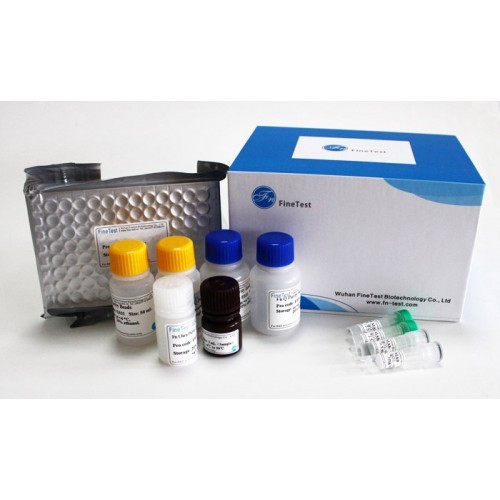Product Description
Recombinant Mouse Serine protease HTRA1 (Htra1), partial is available at Gentaur for Next week Delivery.
Gene Name: Htra1
Alternative Names : High-temperature requirement A serine peptidase 1 (Serine protease 11) (Htra) (Prss11)
Expression Region : 141-480aa
AA Sequence : KLRQPPVIVLQRGACGQGQEDPNSLRHKYNFIADVVEKIAPAVVHIELYRKLPFSKREVPVASGSGFIVSEDGLIVTNAHVVTNKNRVKVELKNGATYEAKIKDVDEKADIALIKIDHQGKLPVLLLGRSSELRPGEFVVAIGSPFSLQNTVTTGIVSTTQRGGKELGLRNSDMDYIQTDAIINYGNSGGPLVNLDGEVIGINTLKVTAGISFAIPSDKIKKFLTESHDRQAKGKAVTKKKYIGIRMMSLTSSKAKELKDRHRDFPDVLSGAYIIEVIPDTPAEAGGLKENDVIISINGQSVVTANDVSDVIKKENTLNMVVRRGNEDIVITVIPEEIDP
Sequence Info : Partial
Tag Info : C-terminal 6xHis-tagged
Theoretical MW : 39.0 kDa
Storage Buffer : Tris/PBS-based buffer, 5%-50% glycerol. If the delivery form is lyophilized powder, the buffer before lyophilization is Tris/PBS-based buffer, 6% Trehalose, pH 8.0.
Endotoxin Level : Not tested-
Biological Activity : Not tested
Storage : Short term: -20°C; Long term: -80°C. Minimize freeze and thaw cycles.
Research Area : Signal Transduction
Restriction : For Research Use Only. Not for use in diagnostic procedures, drug use, or for administration to humans or animals.
Relevance : Serine protease with a variety of targets, including extracellular matrix proteins such as fibronectin. HTRA1-generated fibronectin fragments further induce synovial cells to up-regulate MMP1 and MMP3 production. May also degrade proteoglycans, such as aggrecan, decorin and fibromodulin. Through cleavage of proteoglycans, may release soluble FGF-glycosaminoglycan complexes that promote the range and intensity of FGF signals in the extracellular space. Regulates the availability of insulin-like growth factors (IGFs) by cleaving IGF-binding proteins. Inhibits signaling mediated by TGF-beta family members. This activity requires the integrity of the catalytic site, but it is unclear whether it leads to the proteolytic degradation of TGF-beta proteins themselves or not. By acting on TGF-beta signaling, may regulate many physiological processes, including retinal angiogenesis and neuronal survival and maturation during development. Intracellularly, degrades TSC2, leading to the activation of TSC2 downstream targets.
Function : Serine protease with a variety of targets, including extracellular matrix proteins such as fibronectin. HTRA1-generated fibronectin fragments further induce synovial cells to up-regulate MMP1 and MMP3 production. May also degrade proteoglycans, such as aggrecan, decorin and fibromodulin. Through cleavage of proteoglycans, may release soluble FGF-glycosaminoglycan complexes that promote the range and intensity of FGF signals in the extracellular space. Regulates the availability of insulin-like growth factors (IGFs) by cleaving IGF-binding proteins. Inhibits signaling mediated by TGF-beta family members. This activity requires the integrity of the catalytic site, but it is unclear whether it leads to the proteolytic degradation of TGF-beta proteins themselves
Involvement in disease :
Subcellular location : Cell membrane, Secreted, Cytoplasm, cytosol
Protein Families : Peptidase S1C family
Tissue Specificity : In the brain, mainly expressed in cortical areas both in glial cells and neurons (at protein level). In bones, deposited in the matrix, with higher level in newly formed bone compared to fully calcified bone (at protein level). Also expressed in the tendons (at protein level). In the articular cartilage, detected only in the deepest zone of the joint cartilage. Not detected in the chondrocytes of the growth plate (at protein level). In an experimental arthritis model, at early disease stages, up-regulated in articular chondrocytes in the deep layers of the cartilage (at protein level). As arthritis progresses, chondrocyte expression expands toward the surface.
Paythway :
Uniprot ID : Q9R118
 Euro
Euro
 British Pound
British Pound
 US Dollar
US Dollar








